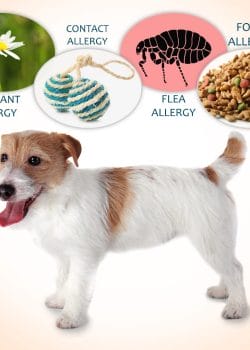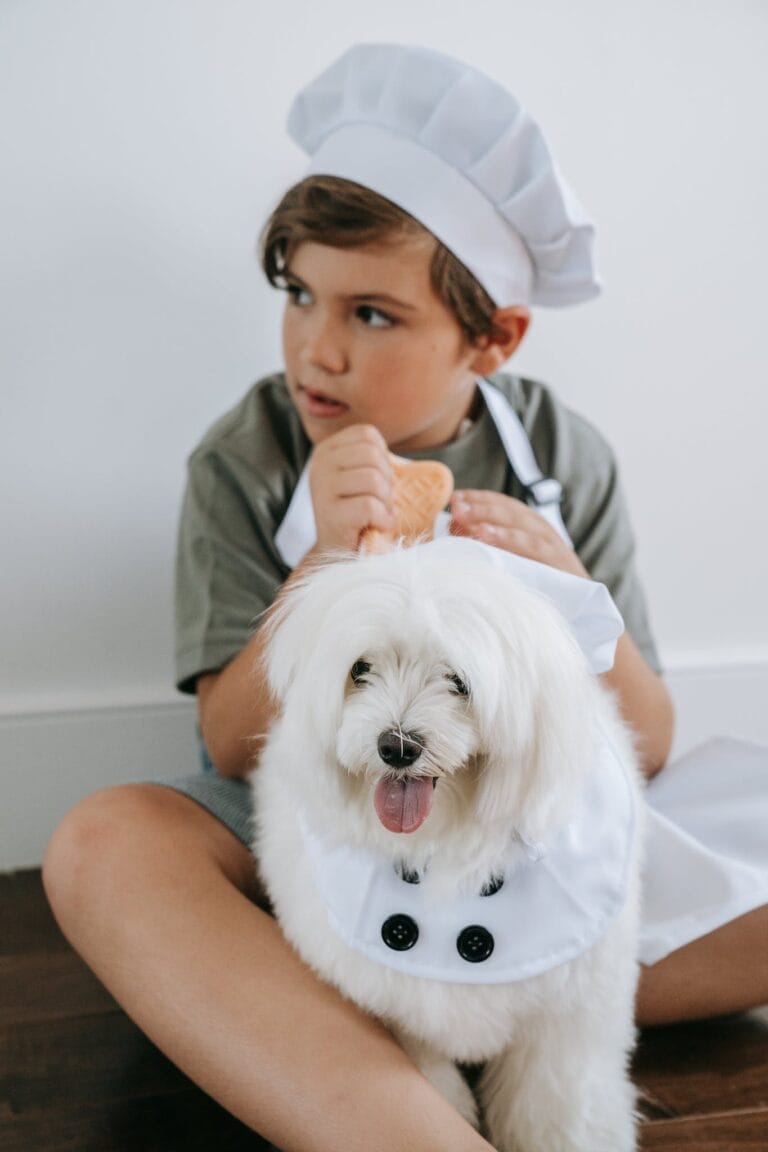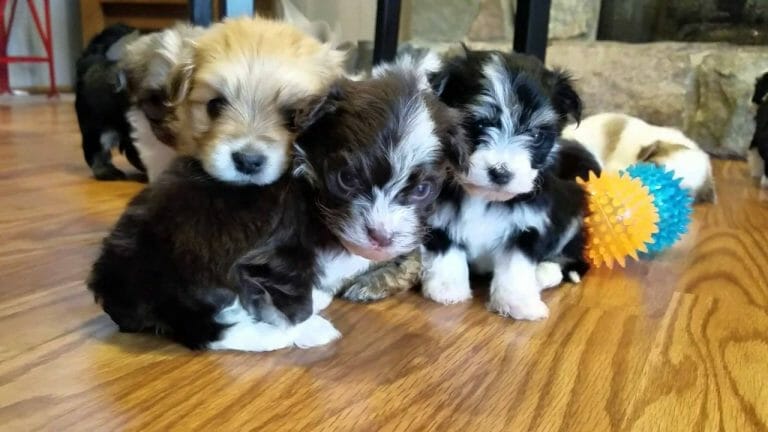
Embarking on the journey of welcoming a four-legged companion into your home can be an exhilarating and blissful adventure.
But let’s not forget that these curious creatures have a knack for mischief. If you don’t want your home turning into their personal playground of chaos, dog-proofing is the name of the game.
This post will discuss some key steps you can take to make your home a dog-friendly haven. From securing hazardous items to creating designated play areas, these tips will help you create a safe and enjoyable space for your four-legged friend. So, let’s get started and ensure that your home is a safe haven for your beloved dog.
Assessing Potential Hazards In Your Home
Keeping your furry friend safe and out of harm’s way is essential as a responsible pet owner. Dogs are naturally curious creatures, often exploring their surroundings with their mouths. As such, it’s crucial to assess and eliminate any potential hazards that may pose a threat to their health and well-being.
Identifying Common Household Items That Can Be Dangerous For Dogs
Dogs love to explore and play, but certain household items can be hazardous to their health when ingested or interacted with in other ways. Ensure your home is dog-proof by taking note of the following:
- Trash cans: Dogs can be notorious for rummaging through trash cans, putting them at risk of consuming toxic substances or choking hazards.
- Electrical cords: Puppies, in particular, have a tendency to chew on cords, exposing them to electrical shock or potential injuries from damaged wires.
- Small objects: Be cautious of small objects such as buttons, coins, or batteries, which can pose choking hazards if accidentally swallowed.
- Sharp objects: Keep sharp objects like knives, scissors, or needles securely stored away to prevent accidental injuries.
Understanding The Risks Associated With Chemicals And Cleaning Products
Chemicals and cleaning products are commonly used in households but can be toxic to dogs if ingested or exposed to for extended periods. Protect your canine companion by considering the following:
- Medications: Ensure all medications, both prescription and over-the-counter, are stored securely in cabinets that your dog cannot access.
- Cleaning supplies: Household cleaners, including bleach, disinfectants, and floor cleaners, should be kept in a locked cabinet to prevent accidental ingestion or exposure.
- Insecticides and pesticides: Avoid using toxic chemicals to combat pests in areas accessible to your dog. Opt for pet-friendly alternatives or consult with a professional pest control service.
Evaluating The Safety Of Plants And Flowers Within Your Home
While they add beauty to any space, certain plants and flowers can be toxic to dogs if consumed. Take the necessary precautions to protect your pet:
- Research: Familiarize yourself with plants and flowers that are toxic to dogs. Some common examples include lilies, azaleas, daffodils, and tulips.
- Restrict access: Place toxic plants out of your dog’s reach or consider using hanging baskets to keep them safely away.
- Pet-friendly alternatives: Opt for dog-safe plants and flowers, such as spider plants, Boston ferns, or pet-friendly succulents, to add a touch of green to your home.
By proactively assessing and addressing potential hazards within your home, you can create a safe environment for your beloved four-legged companion. Regularly update your assessment as new items or substances enter your household that may pose a risk to your dog’s well-being. Your diligent efforts will go a long way in ensuring your dog lives a happy, healthy life.
Securing Your Living Spaces
Ensuring the safety of your furry friend within your home goes beyond just providing them with love and treats. Dog-proofing your living spaces is essential to prevent any accidents or mishaps that could potentially harm your beloved pet. By taking a few precautionary measures, you can create a secure environment where your four-legged companion can roam freely without any potential hazards. In this article, we will explore different ways you can secure your living spaces and keep your dog safe and sound.
Installing Baby Gates To Restrict Access To Certain Areas
Just like you would baby-proof your home for a little one, installing baby gates can be an effective method to restrict your dog’s access to specific areas in your house. Whether it’s the kitchen, the stairs, or the designated office space, baby gates act as barriers to prevent your dog from entering areas that could pose potential dangers. By using baby gates, you can create safe zones for your pup while still allowing them to be close by.
Blocking Off Entry Points To Prevent Your Dog From Escaping
It’s no secret that dogs are incredibly curious creatures, and their adventurous nature may lead them to try and escape through open doors or gaps in fences. To prevent your furry friend from getting lost or encountering any dangerous situations outside, it’s advisable to block off any potential escape routes. Ensure that your doors and windows are securely closed and sealed, and reinforce any weak points in your fences. By taking these preventative measures, you can provide a safe and secure environment for your dog to enjoy while giving yourself peace of mind.
Updating Window Treatments To Ensure Safety And Prevent Accidents
Windows can be a point of fascination for our furry friends, and if left unattended, they can pose serious risks. To avoid any accidents, it’s crucial to update your window treatments accordingly. Avoid using long or dangling cords, which can be potential choking hazards, and opt for cordless blinds or curtains instead. Additionally, consider adding window locks or safety nets to prevent your dog from accidentally falling out of an open window. These small adjustments can greatly enhance the safety of your living spaces and provide a worry-free environment for your dog.
Organizing And Storing Hazardous Items
Properly Storing Medications And Vitamins Out Of Reach
One of the most essential steps in dog-proofing your home is to ensure that medications and vitamins are stored safely out of your furry friend’s reach. Dogs are curious creatures, and they may mistake pills or chewable medications as treats. To prevent any accidents, it is crucial to properly store these hazardous items. Here’s how:
- Store all medications and vitamins in a secure, locked cabinet that is inaccessible to your dog. This will minimize the risk of your pet accidentally ingesting harmful substances.
- Consider using medication organizers or containers with childproof lids to store the pills. These will provide an extra layer of protection against your dog accessing the contents.
- Remember to keep prescription medications separate from over-the-counter drugs and supplements. Make sure each type is securely stored to prevent any mix-ups or accidental consumption.
- If you have liquid medications, ensure that the bottles are tightly sealed and stored in a cabinet or pantry where your dog cannot reach them. Even small amounts of certain liquids can be toxic to dogs.
Securing Household Cleaners And Chemicals In Locked Cabinets
Household cleaners and chemicals pose a significant danger to dogs if accidentally ingested or exposed to. It’s important to store them in securely locked cabinets to prevent any potential harm. Here’s what you should do:
- Designate a specific cabinet or storage area for household cleaners and chemicals. Ensure it has a lock that your dog cannot easily open.
- Consider installing child safety locks on your cabinets as an additional precaution. These locks will provide an extra level of security, deterring your curious pet from accessing these hazardous substances.
- Make sure all chemicals, including detergents, solvents, and pesticides, are tightly sealed and properly labeled. This will help prevent any accidental spills or leaks that could be harmful to your dog.
- If you use hazardous chemicals regularly, such as for cleaning or gardening purposes, always clean up any spills immediately and keep the area securely closed off until it is safe.
Keeping Small Objects And Potential Choking Hazards Stored Away
Dogs have a tendency to explore their environment using their mouths, making it crucial to keep small objects and potential choking hazards stored away safely. Follow these guidelines to reduce the risk:
- Regularly scan your home for small objects that your dog may find enticing, such as buttons, coins, or small toys. Store them in drawers or containers that cannot be easily opened.
- Keep children’s toys with small parts out of your dog’s reach. If you have young children, establish a safe play area where small toys are confined, preventing them from being scattered around the house.
- Store electrical cords and wires out of your dog’s reach or use cord organizers to bundle them together and keep them tidy. Dogs may chew on cords, which can lead to electric shocks or even cause fires.
- Be mindful of potential choking hazards such as strings, ribbons, or plastic bags. Always dispose of these items properly or store them securely in closed containers.
Protecting Your Furniture And Belongings
When you bring a new furry friend into your home, it’s essential to take steps to protect your furniture and belongings. Dogs, especially puppies, are naturally curious and can inadvertently cause damage if not properly dog-proofed. By implementing a few strategies, you can ensure that your furniture stays intact and your belongings remain safe. In this section, we’ll explore some effective ways to safeguard your furniture and belongings from your dog’s playful nature.
Investing In Dog-friendly Furniture Materials And Accessories
Dogs may love to spend time on the furniture, but their sharp claws and occasional accidents can cause significant damage. To combat this, it’s wise to consider investing in dog-friendly furniture materials and accessories. Look for furniture with durable upholstery fabrics, such as microfiber, leather, or synthetic blends, that are resistant to scratches and stains. These materials are not only more resilient to canine wear and tear, but they also make cleaning up any messes a breeze.
Additionally, consider using accessories like waterproof furniture covers or slipcovers to provide an extra layer of protection. These removable covers can be easily washed and can protect your furniture from fur, dirt, and slobber. By investing in dog-friendly furniture materials and accessories, you can enjoy your furniture while minimizing the risk of damage.
Using Protective Coverings To Prevent Damage To Upholstery
Even with the most durable upholstery, accidents can still happen. To ensure your furniture stays in top condition, consider using protective coverings to prevent damage. One effective option is a plastic furniture cover that provides a barrier between your dog and the upholstery. These covers are transparent, allowing you to still appreciate the aesthetic of your furniture while keeping it safe from dirt, moisture, and scratches.
For a more stylish and comfortable alternative, you can opt for specially designed furniture protectors made from high-quality and breathable fabrics. These covers can be easily fitted onto your furniture, providing a soft and cozy surface for your dog to relax on while safeguarding your upholstery underneath. Using protective coverings is a proactive way to prevent any accidental damage and extend the lifespan of your furniture.
Teaching Your Dog Proper Chewing Behavior
Chewing is a natural behavior for dogs, especially during their teething stages. However, it’s crucial to teach them what is acceptable to chew and what is off-limits. Provide your dog with plenty of designated chew toys to redirect their chewing instincts onto appropriate items. Choose toys made from durable materials, such as rubber or nylon, that can withstand the strongest chewers.
Additionally, regularly supervise your dog and provide gentle corrections when they start chewing on furniture or belongings. Consistency and positive reinforcement are key in teaching your dog proper chewing behavior. By guiding them towards their designated toys, you can prevent them from damaging your furniture and belongings.
By implementing these strategies, you can effectively protect your furniture and belongings from potential damage caused by your dog’s playful nature. Investing in dog-friendly furniture materials and accessories, using protective coverings, and teaching your dog proper chewing behavior will go a long way in ensuring a harmonious and damage-free home.
Ensuring Electrical And Appliance Safety
Ensuring Electrical and Appliance Safety for Dogs
When dog-proofing your home, it’s essential not to overlook electrical and appliance safety. Dogs, especially curious puppies, have a tendency to explore with their mouths, putting them at risk of electrical shock, burns, or accidents involving appliances and cords. By taking precautionary measures, you can create a safe environment for your furry friend and your home.
Securing loose electrical cords and wires:
Loose cords and wires pose significant hazards for dogs. They can trip over them or be tempted to chew on them, risking electrical shock or fires. To prevent accidents, securely fasten all cords and wires out of your dog’s reach. Cord clips or cable organizers can help keep them neatly tucked away and hidden. By eliminating temptations, you can minimize the risk of accidents.
Using cord protectors to prevent chewing and electrical shock:
Despite your efforts to secure cords, some dogs may still be tempted to chew on them. This behavior not only poses a safety risk but also increases the chances of electrical shock. Fortunately, there are cord protectors available that deter chewing and provide additional insulation. These protectors have a bitter taste or smell that dogs find unappealing, discouraging them from biting the cords. Adding cord protectors adds an extra layer of protection.
Practicing caution with appliances and keeping them out of reach:
Appliances like hairdryers or curling irons can be hazardous if left unattended or within your dog’s reach. Always be mindful of where you place appliances after use, ensuring they are unplugged and safely stored away. Make it a habit to immediately close appliance doors or lids to prevent accidental contact. If possible, allocate a separate room or closed cabinet for storing appliances, making them entirely inaccessible to your dog. Being cautious and proactive reduces the risk of accidents.
In conclusion, ensuring electrical and appliance safety is crucial for dog-proofing your home. Secure loose cords, use cord protectors to deter chewing, and practice caution with appliances. These simple yet effective steps will create a safe environment for your dog, offering you peace of mind and a secure haven for everyone in your home.
Creating A Safe Outdoor Space
Creating a safe outdoor space is essential for keeping your furry friend happy and healthy. By taking a few precautions, you can ensure that your dog is protected while enjoying the great outdoors. In this section, we will explore three key steps you can take to dog-proof your outdoor area: installing a secure fence or barrier, removing toxic plants and substances, and providing shade and shelter for your dog’s comfort. Let’s dive in!
Installing A Secure Fence Or Barrier To Prevent Your Dog From Running Off
One of the first steps in creating a safe outdoor space for your dog is to install a secure fence or barrier. This will help prevent your dog from running off and getting lost or injured. A sturdy fence will not only keep your dog contained but also keep other animals out, reducing the risk of encounters that could lead to altercations or infections. When choosing a fence or barrier, consider its height and material. A fence should be tall enough that your dog cannot jump over it, and the material should be durable and resistant to weathering. Additionally, ensure that the gate of your fence has a secure lock to prevent your dog from accidentally getting out.
Removing Toxic Plants And Substances From Your Yard
Dog-proofing your outdoor space also involves removing any toxic plants or substances from your yard. Dogs are curious creatures and may be tempted to nibble on plants or investigate chemicals. Be mindful of plants such as lilies, azaleas, and tulips, which can be toxic to dogs if ingested. To ensure your dog’s safety, it’s best to remove these plants from your yard or place them out of their reach. In addition to plants, various substances can be hazardous to dogs. These include pesticides, fertilizer, and certain types of mulch. Store these items securely in a locked shed or cabinet, away from your dog’s reach. If you must use them in your yard, choose pet-friendly alternatives and follow the instructions carefully to minimize the risk to your furry friend.
Providing Shade And Shelter For Your Dog’s Comfort
Just like humans, dogs need shade and shelter to stay comfortable during hot or inclement weather. Make sure your outdoor space has shaded areas where your dog can retreat from the sun’s rays. This can be accomplished by installing a canopy, awning, or providing natural shade from trees or bushes. It’s also important to provide a dedicated shelter for your dog in your outdoor area. This can be a doghouse or a covered space with bedding that offers protection from rain, wind, and extreme temperatures. Ensure that the shelter is well-ventilated and large enough for your dog to comfortably lie down and move around. By following these three steps – installing a secure fence or barrier, removing toxic plants and substances, and providing shade and shelter – you can create a safe and enjoyable outdoor space for your dog. Remember, a safe environment allows your furry friend to explore, play, and thrive without unnecessary risks. So, take the necessary precautions and let your dog embrace the great outdoors with confidence!
Implementing Structured Training And Boundaries
- Implementing structured training and boundaries:
- Teaching basic obedience commands to prevent dangerous behavior:
- Start with fundamental commands like “sit,” “stay,” and “come.”
- These commands serve as useful tools for everyday life and safety.
- Establishing rules and boundaries for interactions with household items:
- Designate specific areas for your dog with their bed, toys, and water.
- Use baby gates or barricades to restrict access to certain areas.
- Utilizing positive reinforcement techniques:
- Use treats, praise, or playtime as rewards for desired behavior.
- Praise and reward immediately when your dog exhibits good behavior.
- Consistency and patience are key in maintaining a structured training approach.
- Create a harmonious and safe living environment for both you and your dog.
- Teaching basic obedience commands to prevent dangerous behavior:
Regular Maintenance And Safety Checks
Conducting regular inspections of your home for potential hazards is essential to keeping your Havi companion safe. Dogs, being naturally curious creatures, can easily find themselves in precarious situations if we don’t take the necessary precautions. By implementing a regular maintenance and safety check routine, you can minimize the risks and provide a secure environment for your beloved canine companion.
Conducting Regular Inspections Of Your Home For Potential Hazards
To ensure the safety of your dog, it is crucial to regularly inspect your home for potential hazards that could harm or injure them. Start by examining each room, paying close attention to items within your dog’s reach. Here’s a checklist to guide you:
| Room | Potential Hazards | Action Steps |
| Living Room | Fragile decorations, electrical cords, toxic plants | Secure fragile items, hide cords, remove toxic plants |
| Kitchen | Chemicals, sharp objects, human food | Store chemicals safely, secure sharp objects, keep human food out of reach |
| Bathroom | Medications, cleaning products, small objects | Store medications securely, keep cleaning products out of reach, remove small objects |
| Bedroom | Jewelry, cords, choking hazards | Secure jewelry, hide cords, remove choking hazards |
| Outdoor Areas | Toxic plants, sharp objects, open gates | Remove toxic plants, secure sharp objects, ensure gates are closed |
By regularly inspecting your home, you can proactively identify and address any potential danger spots, creating a safe haven for your pet.
Keeping Emergency Contact Numbers Readily Available
Emergencies can happen when we least expect them, so it’s important to be prepared. Keep the following emergency contact numbers readily available:
- Emergency veterinarian
- Poison Control Center
- Local animal shelters
- Emergency clinic
In case of an emergency, having these numbers easily accessible can save valuable time and potentially your dog’s life.
Planning For Fire Safety And Evacuation Procedures For Your Dog
Fire safety is paramount in dog-proofing your home. Make sure you have a well-thought-out plan in place to evacuate your Havi in case of a fire. Here are some steps you can take:
- Designate a safe meeting place outside your home.
- Place stickers on your doors and windows indicating the presence of pets inside.
- Keep leashes and harnesses easily accessible near exits.
- Practice fire drills regularly with your dog.
By incorporating fire safety and evacuation procedures into your dog-proofing routine, you can ensure that your dog is prepared for any unforeseen emergencies.
Frequently Asked Questions Of Dog-proofing Your Home
1. How can I ensure that my home is safe for my new puppy?
When bringing a new puppy into your home, it is essential to puppy-proof your living space. Start by securing loose electrical cords and outlets to prevent chewing accidents. Store household chemicals and medications out of reach, as they can be toxic to dogs. Keep small objects, such as coins or small toys, off the floor to avoid choking hazards. Finally, make sure to block off any areas that may pose a danger, such as staircases or balconies.
2. What steps should I take to protect my furniture from my teething puppy?
Teething is a natural process for puppies, and they often seek relief by chewing on furniture. To protect your belongings, provide your puppy with appropriate chew toys and bones. Encourage them to chew on these items by offering praise and rewards. Additionally, you can use bitter-tasting sprays or deterrents on furniture legs to discourage chewing. Consistency and supervision are key in redirecting your puppy’s chewing behavior.
3. How can I prevent my puppy from getting into the trash?
Puppies are naturally curious and may be attracted to the smells coming from your trash can. To prevent this, invest in a trash can with a secure lid or keep it in a cabinet that your puppy cannot access. Avoid leaving food scraps or enticing smells exposed. If your puppy does manage to get into the trash, calmly redirect their attention to a more appropriate activity and reinforce positive behavior.
4. What precautions should I take to keep my puppy away from houseplants?
Some houseplants can be toxic to dogs if ingested. To keep your puppy safe, research which plants are harmful and remove them from your home or place them out of reach. Alternatively, you can use barriers or baby gates to restrict access to certain areas. Consider providing your puppy with safe, pet-friendly plants to satisfy their curiosity.
5. How can I prevent my puppy from chewing on household items?
Chewing is a natural behavior for puppies, but it can be destructive if directed towards your belongings. Provide your puppy with a variety of appropriate chew toys to redirect their chewing instinct. Keep valuable or sentimental items out of reach until your puppy learns what is acceptable to chew. Consistently reinforce positive behavior and provide plenty of exercise and mental stimulation to prevent boredom.
6. What measures should I take to secure my backyard for my puppy?
If you have a backyard, it is important to create a safe and secure environment for your puppy. Ensure that your fence is in good condition and free from any gaps or holes that your puppy could escape through. Remove any toxic plants or substances from the yard. Consider installing a doggy door or designated potty area to encourage proper outdoor behavior.
7. How can I prevent my puppy from chewing on electrical cords?
Chewing on electrical cords can be extremely dangerous for puppies. To prevent this behavior, keep cords out of your puppy’s reach by using cord covers or hiding them behind furniture. You can also use bitter-tasting sprays or deterrents to discourage chewing. Supervise your puppy closely when they are near cords and redirect their attention to appropriate chew toys.
8. What steps should I take to protect my puppy from household cleaners?
Household cleaners can be toxic to dogs if ingested. To keep your puppy safe, store cleaning products in locked cabinets or high shelves. Use pet-friendly, non-toxic cleaning alternatives whenever possible. After cleaning, ensure that surfaces are thoroughly rinsed and dried to prevent your puppy from coming into contact with any harmful residue.
9. How can I prevent my puppy from accessing the kitchen counters?
Puppies are notorious for exploring kitchen counters in search of food. To deter this behavior, keep counters clear of any food or enticing smells. Use baby gates or barriers to restrict access to the kitchen. Consistently reinforce positive behavior and reward your puppy for staying away from the counters.
10. What precautions should I take to keep my puppy away from cords and blinds?
Cords and blinds can pose a strangulation hazard for puppies. To prevent accidents, secure cords out of your puppy’s reach by using cord winders or clips. Consider using cordless blinds or installing window coverings that are inaccessible to your puppy. Regularly inspect cords and blinds for any signs of damage and replace them if necessary.
Conclusion
To keep your Havanese safe and your home intact, dog-proofing is essential. By following these simple steps, such as securing hazardous items, creating safe zones, and providing mental stimulation, you can ensure a harmonious living environment for both you and your dog.
Remember, prevention is key when it comes to keeping your four-legged family member out of harm’s way. With careful planning and conscientiousness, you can enjoy a stress-free and accident-free home with your beloved pooch. Happy dog-proofing!
- About the Author
- Latest Posts

Sara is a passionate writer and an avid lover of Havanese dogs. With several years of experience in dog training, breeding, and care, she has developed a deep understanding and admiration for the Havanese breed. Sara’s mission is to provide valuable insights, resources, and tips to help Havanese dog owners provide the best possible care and nurturing for their beloved pets.








